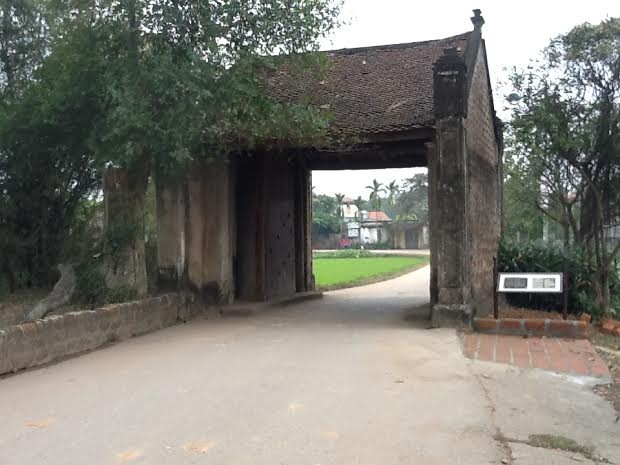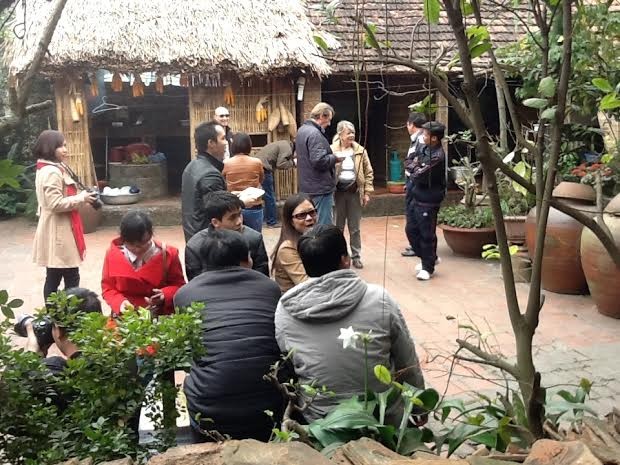(VOVworld) - Duong Lam ancient village has been presented with the award of merit of the UNESCO Asia-Pacific Awards for Cultural Heritage Conservation. This is the fifth time Vietnam has received this award since it was created in 2000.

Mong Phu village's communal house |
In 2005, Duong Lam, which is located in Son Tay township, 50 km from Hanoi, became the first village in Vietnam to be recognized as a National Historical and Cultural Heritage. Duong Lam village still retains most of the characteristics of a typical Vietnamese village: a village gate, banyan trees, a wharf, a communal yard, pagodas, temples, a well and rice fields. In the past 10 years, the village has received financial support from the Vietnamese and Japanese governments to preserve its cultural heritages. As a result, 17 relics and ancient houses in the village have been restored.
Five structures with great architectural, cultural and historical significance were restored: the gate of Mong Phu village, On pagoda, Giang Van Minh chapel and the ancient houses of Mr. Nguyen Van Hung and Mr. Ha Van Vinh. These structures had deteriorated and were on the verge of collapse. According to UNESCO, the project to preserve Duong Lam ancient village is a model for the preservation of cultural heritages in other rural areas of Vietnam. Pham Hung Son is Director of the Duong Lam Relic Management Board: “We have an 8-year plan to preserve and promote the values of Duong Lam ancient village. The plan was approved by Hanoi authorities in October last year and will be announced soon. This is a master plan with a roadmap for the management, restoration, preservation and promotion of the cultural values of Duong Lam village”.

Mr. Nguyen Van Hung's ancient house in Duong Lam village |
After systematically surveying and cataloging the intangible cultural heritages of Duong Lam village, agencies are making every effort to revive traditional customs, practices, festivals and cuisines of the local people. Right now, the projects is focusing on compiling and publishing its research. The preservation effort will include the surrounding landscape and ecological environment including local Mia chickens and ancient trees.
Nguyen Van Hung owns one of the two houses restored under the project: “My house was built in 1649 and is the oldest house in Duong Lam. In 2008, we received funding from JICA to restore the house. The work was completed after three months. My family recently received a UNESCO certificate of merit for preserving the house. This is a great honor for my family”.
Mr. Son says the success of the project to preserve Duong Lam ancient village will help to win the village UNESCO recognition as a World Cultural Heritage: “Duong Lam ancient village has significant architecture, landscape, culture and history and meets all the criteria of a national historical relic and world cultural heritage. Japanese and French experts are helping us to attain UNESCO recognition as a world cultural heritage”.
Duong Lam village with its unspoiled landscape and intact ancient architectural style is the pride of local people. Because it is becoming a popular destination for tourists, local people are determined to preserve their village.